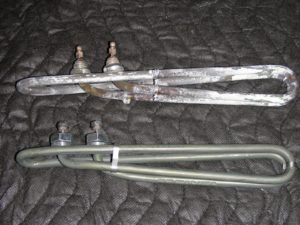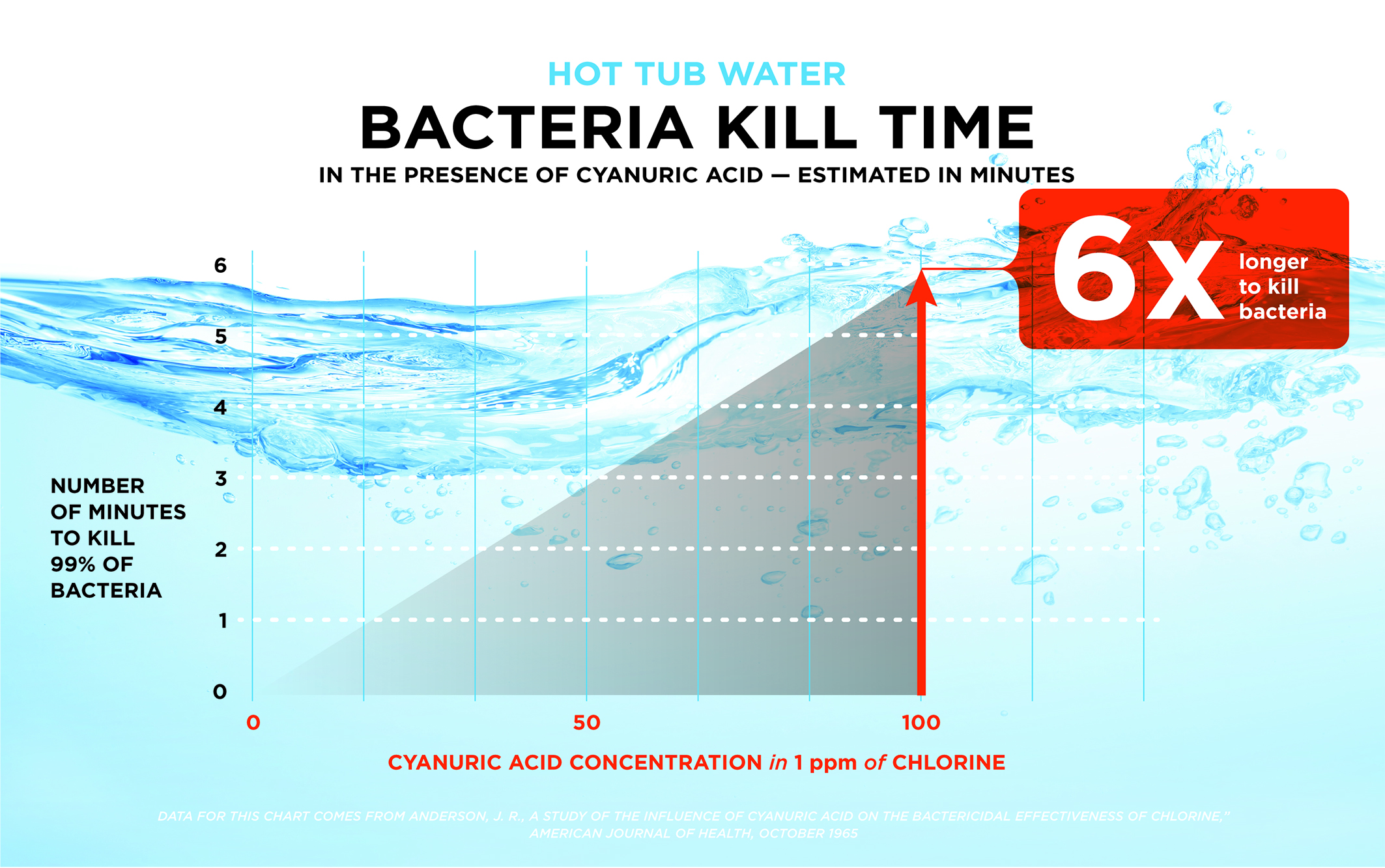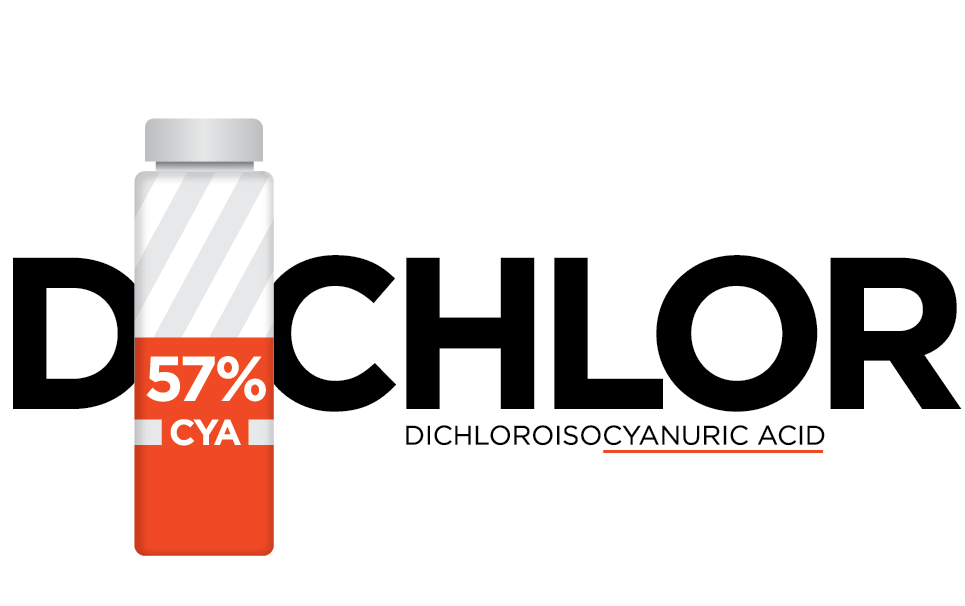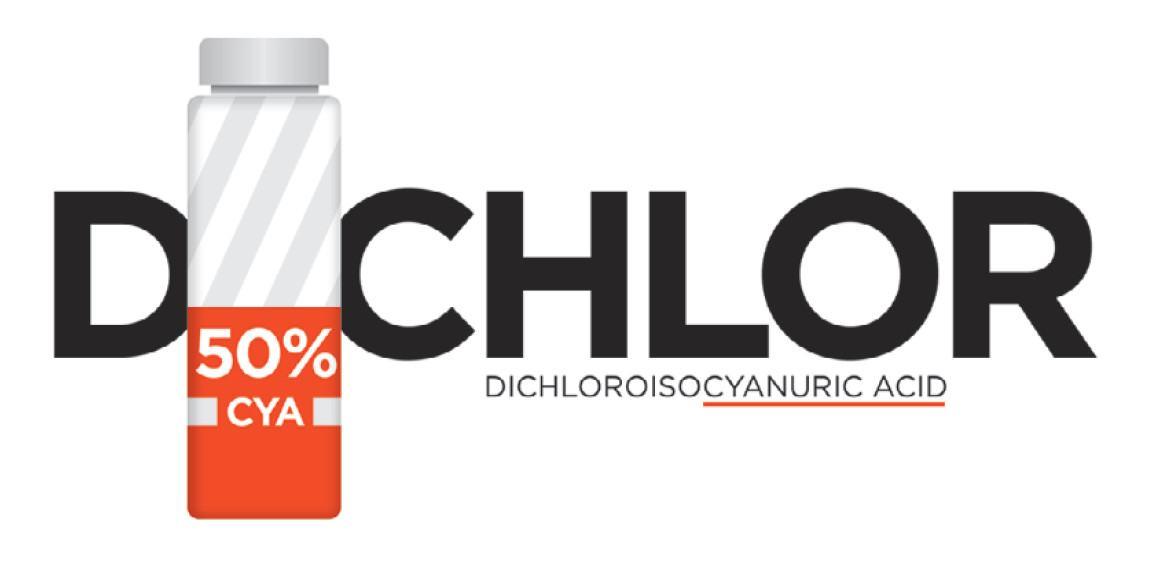In the first article of this 3 part series, we talked about the complaints hot tub owners have because of cyanuric acid (CYA) build-up from dichlor use. Rising levels of CYA diminish chlorine’s ability to kill bacteria and microorganisms in the water. The result is smelly, itchy water that’s difficult for hot tub owners to manage.
CYA Slows Down Kill Times
The chlorine kill time (CT value) for pseudomonas aeruginosa, which is the organism associated with hot tub rash or itch, with no CYA is about 20 seconds. It is one minute and 30 seconds with 50 ppm (parts per million) of CYA present and nearly two minutes with 100 ppm CYA. As CYA increases, chlorine effectiveness decreases. To achieve the same kill time would require more and more chlorine which results in more and more CYA. Therefore, maintaining a proper free chlorine level becomes a moving target.
CYA build-up and the increase in kill times has led the Center for Disease Control (CDC) to issue this statement, “The CDC recommends not using cyanuric acid or chlorine products with cyanuric acid in hot tubs/spas.” This was published in May 2016 in a CDC article called “Your Disinfection Team: Chlorine & pH.”
In November 2016, the Pennsylvania Department of Health published a statement that reads “At even moderate levels of cyanuric acid, the amount of time it takes chlorine to kill pseudomonas aeruginosa (the bacteria that causes “hot tub itch) can be as much as a hundred times as long as in a hot tub or spa without cyanuric acid.” This appeared in the publication “Public Swimming and Bathing Places: Operational and Biological Protocol Recommendations.”

The above heating element is corroded due to the presence of low total alkalinity.
Other Ramifications
High levels of CYA have also caused corrosion because they contribute to Total Alkalinity (TA). When working with the Langelier Saturation Index on balancing water, be sure to account for the CYA level by subtracting about one third of the CYA reading from the TA reading. Your TA may be lower than you think. That could result in corrosive water that damages surfaces and is unpleasant to soak in.
In the third and final article, we’ll look at the industry’s current approach to products that include CYA as well as a proven, easy to use CYA mitigation solution that dramatically reduces the need for chlorine and delivers a spa experience without unpleasant odors and skin irritation. Watch for it in coming weeks and, to learn more, please visit nocya.com.
Resources for this article:
https://www.health.pa.gov/topics/Documents/Programs/Operations-SOPRecommendations.pdf
https://www.cdc.gov/healthywater/swimming/residential/disinfection-testing.html
J.E. O’Brien, J.C. Morris & J.N. Butler, “Equilibria Aqueous Solutions of Chlorinated Isocyanurate” Ch. 14 in Alan J. Rubin’s Chemistry of Water Supply, Treatment and Distribution”, Ann Arbor Science Publishers, Inc., 1974, ISBN 0-250-40036-7, pp. 333-358
Anderson, J.R., “A Study of the Influence of Cyanuric Acid on the Bactericidal Effectiveness of Chlorine,” American Journal of Public Health, Oct, 1965.


